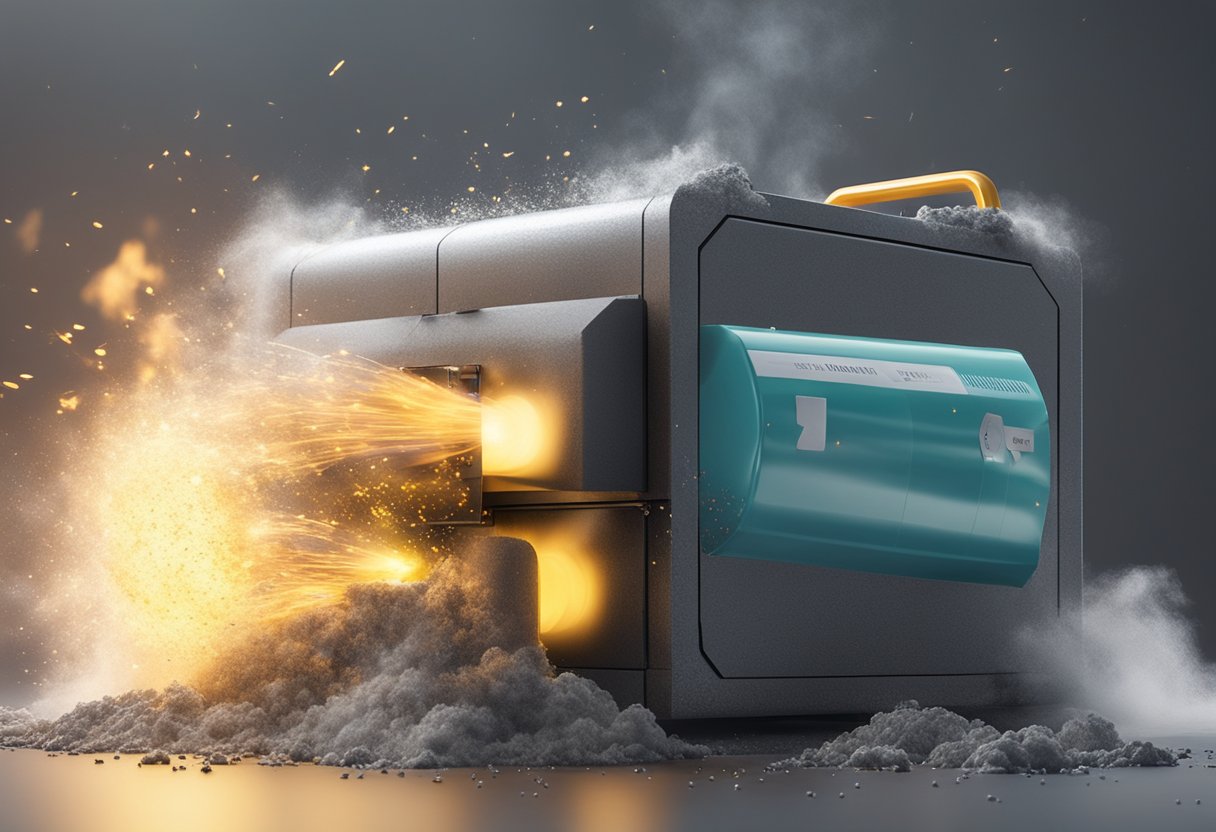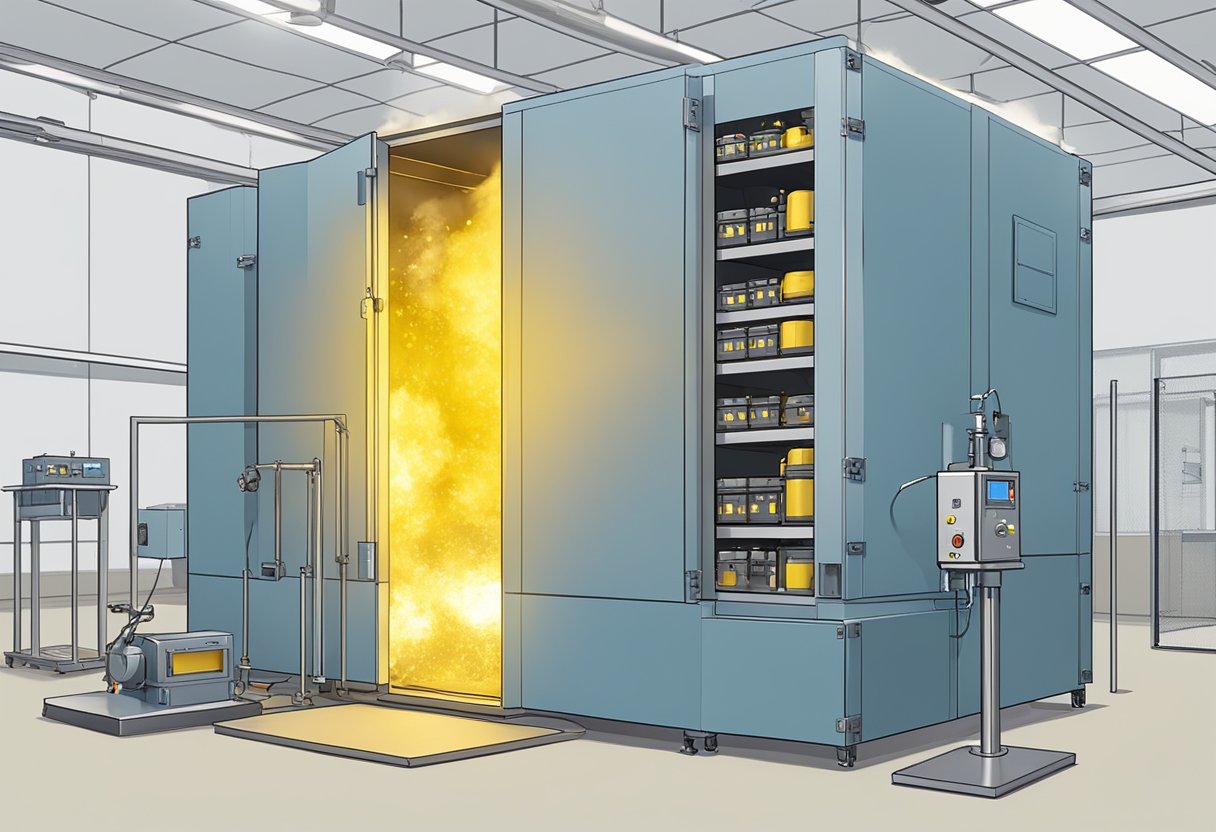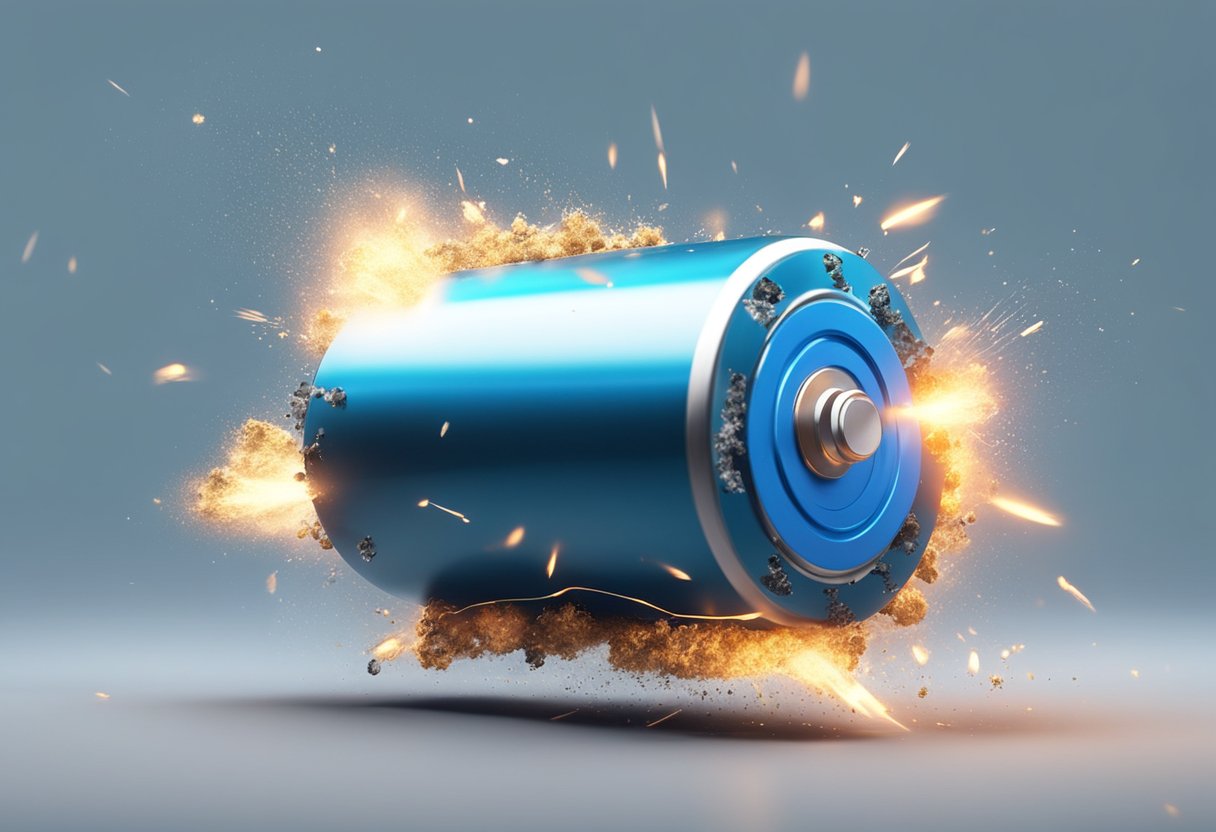Lithium Battery Explosion Test: Understanding the Risks and Safety Measures
If you’re looking to learn more about lithium battery explosions, you’ve come to the right place. Lithium-ion batteries are commonly used in electronic devices, electric vehicles, and even in some homes as an energy storage solution. However, these batteries are not without their risks. In rare cases, they can explode, causing serious damage and injury.

To better understand the potential dangers of lithium-ion batteries, researchers have conducted explosion tests. These tests involve intentionally causing a thermal runaway, which is a chain reaction of events that leads to the battery overheating and potentially exploding. The goal of these tests is to determine how to prevent these incidents and mitigate their effects if they do occur.
Several organizations have conducted lithium battery explosion tests, including UL’s Fire Safety Research Institute (FSRI). One of their tests involved simulating a thermal runaway inside a residential garage, which demonstrated the explosive power of a lithium-ion battery. By studying the results of these tests, researchers can develop safety guidelines and recommendations to reduce the risk of lithium battery explosions.
Fundamentals of Lithium Battery Technology

Lithium batteries are rechargeable batteries that are commonly used in portable electronic devices such as smartphones, laptops, and tablets. They are also used in electric vehicles, power tools, and other applications that require high energy density and long-lasting power. Lithium batteries are preferred over other types of batteries because they have a high energy density, low self-discharge rate, and a long cycle life.
The basic structure of a lithium battery consists of an anode, a cathode, and an electrolyte. The anode is typically made of graphite, while the cathode is made of a metal oxide such as lithium cobalt oxide or lithium iron phosphate. The electrolyte is a solution that allows the flow of lithium ions between the anode and cathode during charging and discharging.
One of the main advantages of lithium batteries is their high energy density. This means that they can store a large amount of energy in a small and lightweight package. Lithium batteries also have a low self-discharge rate, which means that they can hold their charge for a long time when not in use. Additionally, lithium batteries have a long cycle life, which means that they can be recharged and discharged many times before they need to be replaced.
However, lithium batteries also have some disadvantages. One of the main disadvantages is their tendency to overheat and catch fire or explode if they are not handled properly. This is because lithium batteries contain flammable electrolytes that can ignite if they are exposed to heat or sparks. In recent years, there have been several incidents of lithium battery explosions, which has led to increased safety concerns and regulations.
To prevent lithium battery explosions, it is important to follow proper handling and storage procedures. This includes avoiding exposure to high temperatures, avoiding puncturing or damaging the battery, and using the correct charger for the battery. It is also important to dispose of lithium batteries properly, as they can be a hazard if they are not recycled or disposed of in a safe manner.
In conclusion, lithium batteries are a popular and efficient type of rechargeable battery that is used in a wide range of applications. However, they also have some safety concerns that must be addressed to prevent accidents and ensure safe use. By following proper handling and storage procedures, lithium batteries can be used safely and effectively for many years.
Lithium Battery Explosion Dynamics

Lithium-ion batteries are widely used in portable electronics, electric vehicles, and energy storage systems. However, they are also known for their potential to explode or catch fire, which can be dangerous and cause serious damage. Understanding the explosion dynamics of these batteries is crucial to prevent accidents and improve safety.
Chemical and Thermal Instability
Lithium-ion batteries contain a flammable electrolyte that can ignite or explode when exposed to heat or a spark. This can happen when the battery is overcharged, punctured, or exposed to high temperatures. When the temperature of the battery rises, the electrolyte can decompose, releasing gases that can cause the battery to swell, rupture, or explode.
Mechanical Failure Modes
Mechanical failure modes can also cause lithium-ion batteries to explode. For example, if the battery is damaged or crushed, the electrodes can come into contact and cause a short circuit. This can generate heat and trigger a thermal runaway reaction that can lead to an explosion. Additionally, if the battery is dropped or subjected to a severe impact, it can rupture or leak, which can also cause a fire or explosion.
To prevent lithium-ion battery explosions, it is important to follow proper handling and storage procedures. Always use the correct charger and do not overcharge the battery. Avoid exposing the battery to extreme temperatures or physical damage. If you suspect that a battery is damaged or malfunctioning, do not use it and dispose of it properly. By understanding the chemical and thermal instability and mechanical failure modes of lithium-ion batteries, you can take steps to reduce the risk of explosion and improve safety.
Standard Explosion Test Procedures
When testing the safety of lithium-ion batteries, the explosion test is an essential procedure. This test is conducted to determine the safety of a battery in extreme conditions. Here are the standard procedures for the explosion test:
Test Environment and Equipment
The explosion test is conducted in a specialized laboratory equipped with a test chamber. The test chamber is designed to contain the explosion and prevent any damage to the surrounding area. The test chamber is also equipped with sensors that monitor the temperature, pressure, and other parameters during the test.
Protocol for External Short Circuit
The external short circuit test is conducted to determine the safety of a battery in the event of a short circuit. The test involves connecting the positive and negative terminals of the battery with a wire. The wire is then heated to create a short circuit. The battery is monitored for any signs of overheating, swelling, or explosion during the test.
Overcharge and Over-Discharge Testing
Overcharge and over-discharge testing is conducted to determine the safety of a battery in the event of overcharging or over-discharging. The battery is charged or discharged at a higher rate than its rated capacity to simulate extreme conditions. The battery is monitored for any signs of overheating, swelling, or explosion during the test.
Overall, the explosion test is an essential procedure for ensuring the safety of lithium-ion batteries. By following the standard procedures, you can ensure that the battery is safe to use in extreme conditions.
Safety Measures and Accident Prevention
When it comes to lithium battery explosion tests, safety measures and accident prevention are of utmost importance. Here are some strategies to help mitigate the risks associated with lithium battery explosions.
Design Strategies for Mitigation
One of the most effective ways to prevent lithium battery explosions is to implement design strategies that mitigate the risks. For example, designing batteries with thicker separators can help prevent thermal runaway, which is a common cause of lithium battery explosions. Additionally, using non-flammable electrolytes can help reduce the risk of fire and explosion.
Another effective design strategy is to implement battery management systems (BMS) that monitor the battery’s temperature, voltage, and current. BMS can help prevent overcharging and over-discharging, which can lead to thermal runaway and cause the battery to explode.
Regulatory Compliance and Standards
Regulatory compliance and standards are also critical in preventing lithium battery explosions. There are several standards and regulations that address the safety of lithium batteries, including the UN Manual of Tests and Criteria, the IEC 62133 standard, and the UL 1642 standard.
It is important to ensure that lithium batteries are tested and certified to comply with these standards and regulations before they are used in any applications. Additionally, it is important to follow proper handling and disposal procedures for lithium batteries to prevent accidents and environmental damage.
By implementing these design strategies and adhering to regulatory compliance and standards, you can help prevent lithium battery explosions and ensure the safety of your products and applications.
Case Studies of Lithium Battery Explosions
Lithium batteries are used in various electronic devices, from smartphones to electric vehicles. However, they pose a risk of explosion in certain conditions. Here are some case studies of lithium battery explosions:
-
In September 2022, a lithium-ion battery caused a fire in a battery testing facility in China. The fire started in a room that tests for battery explosion and was on the first floor of the building. A technician left a lithium-ion battery in the explosion test equipment for the weekend, which unexpectedly caused the fire. (source)
-
In Arizona, USA, four firefighters were injured in a lithium-ion battery energy storage system (ESS) explosion in April 2019. The firefighters were responding to a fire at an energy storage facility when the explosion occurred. The explosion was caused by thermal runaway, a process in which a battery generates heat and gas that can lead to an explosion. (source)
-
In Beijing, China, two firefighters were killed and 19 others were injured in a lithium battery explosion in May 2018. The explosion occurred in a warehouse that stored lithium batteries. The cause of the explosion was a short circuit in a lithium battery pack. (source)
These case studies highlight the importance of proper handling and storage of lithium batteries. It is essential to follow safety guidelines and regulations when dealing with lithium batteries to prevent accidents and explosions.
Future Directions in Explosion Testing and Safety
As lithium-ion batteries become more ubiquitous in modern society, it is increasingly important to ensure their safety. One area of research that is currently being explored is explosion testing. By simulating explosions in a controlled environment, researchers can better understand the causes of battery explosions and develop new safety measures to prevent them.
One future direction in explosion testing is the development of more accurate and realistic simulations. Currently, most explosion testing is done using small-scale tests that may not accurately reflect real-world conditions. By developing larger and more sophisticated testing facilities, researchers can create more realistic simulations that will provide more accurate data and help to identify potential safety issues before they become a problem.
Another area of research is the development of new safety measures to prevent battery explosions. This includes the use of new materials that are less likely to catch fire or explode, as well as the development of new battery designs that are more resistant to damage. Additionally, researchers are exploring new methods for detecting potential safety issues before they become a problem, such as the use of sensors that can detect changes in temperature or pressure.
Overall, the future of explosion testing and safety is bright. By continuing to invest in research and development, we can ensure that lithium-ion batteries remain a safe and reliable source of energy for years to come.






































